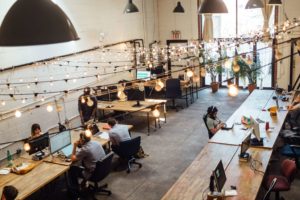
10 free tools for remote working teams
With COVID-19 keeping everyone away from the office, the need for tools that accommodate remote teams continues to grow. Unfortunately,

Elevate your talent attraction and retention with free employee benefits. Uncover a platform that effortlessly entices, engages, and retains your valuable staff.
Get a free demoSee how leading healthcare organisation Healius turned turnover into triumph with Flare.
Read Healius’ storyDevelop your business skills and HR expertise with the Flare Benefits Resource Hub. Get access to helpful tools, articles, guides, webinars, and other on-demand resources that can help your business attract, hire, and retain top talent.
Explore insights from our comprehensive survey of 1500+ Australian workers across a variety of industries, revealing the benefits that genuinely make an impact.
Still haven't found what you're looking for? We're here to help.
Get in touch
With COVID-19 keeping everyone away from the office, the need for tools that accommodate remote teams continues to grow. Unfortunately,

As COVID-19 continues to keep employees remote, companies have to start thinking about how to adapt their HR processes accordingly.

With Australia now experiencing a new wave of COVID-19 outbreaks, companies continue to feel the pressure of the pandemic. Unfortunately,

Lucas Group has six restaurants across Sydney and Melbourne including Chin Chin, Kisumé, Gogo Bar, Baby Pizza and more. Their

To kick off the HR and leadership series, we will be interviewing Nadine Blackie. Nadine is the Head of Talent

As Australia begins to re-open doors to businesses, company leaders are also starting to plan what the return to work

While there’s certainly a lot of negative news to come out of the pandemic, we’re particularly interested in one silver

The National Cabinet has anticipations of reopening Australia in July. This is good news for many, especially retail workers. But

It’s no surprise to see that employee wellness programs are on the rise. With absenteeism costing the Australian economy over
With COVID-19 keeping everyone away from the office, the need for tools that accommodate remote teams continues to grow. Unfortunately, many companies are also having to keep their budgets small and can’t afford to invest in pricey software to meet their needs. Thankfully, there are several free tools out there that HR teams can use […]